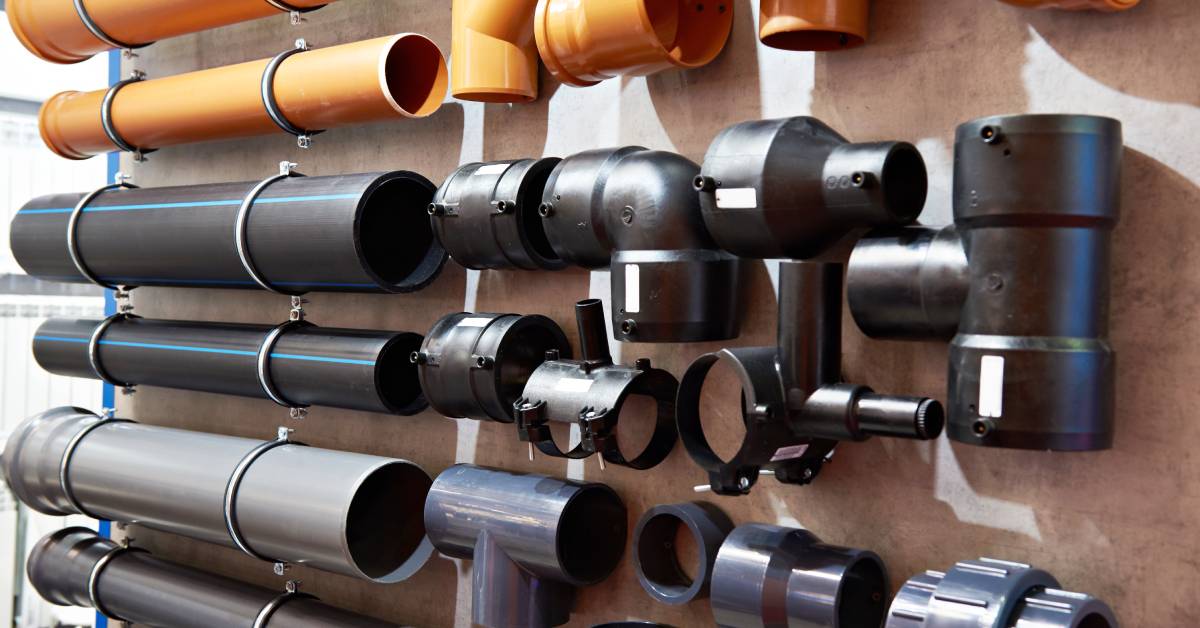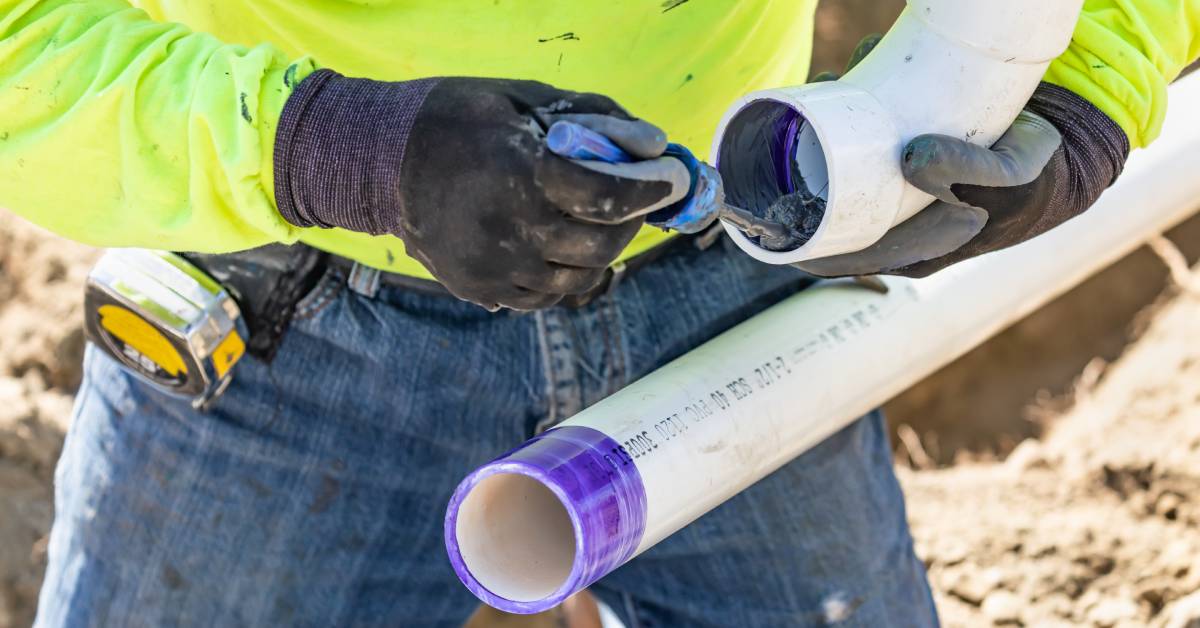21st Jan 2025
A Guide to Class 125 PVC Fittings: Everything To Know
Class 125 PVC fittings are essential components across plumbing and construction industries that are known for their durability and reliability. Whether you're a plumber, builder, or contractor, understanding the role and applications of class 125 PVC fittings can greatly enhance your project outcomes.
This guide to class 125 PVC fittings covers everything you need to know, from their basic characteristics to best practices for installation and maintenance. Take a deep dive into these versatile fittings to find out how you can use them successfully on your job site.
Understanding the Basics: What Class 125 PVC Fittings Are
Class 125 PVC fittings are components used to connect and manage the flow of liquids in plumbing and construction systems. The "Class 125" designation refers to their ability to handle a working pressure of up to 125 psi (pounds per square inch). Made from polyvinyl chloride (PVC), these fittings will endure water pressure and resist wear and tear, making them ideal for a variety of useful applications.
The Key Difference
One important distinction to note when using class 125 PVC fittings is that they do not undergo the same rigorous testing standards as class 40 PVC fittings. While class 40 fittings can handle higher pressure systems and are tested extensively to meet industry-specific benchmarks, class 125 fittings handle lighter-duty applications and don’t require the same level of performance testing.
The manufacturing process for both types of fittings is typically similar, with the key differentiator being the absence of pressure testing and certification for class 125 fittings. This lack of testing allows class 125 fittings to be conveniently offered at a lower cost, making them an attractive option for non-critical applications.
Their availability in different sizes and configurations allows for seamless integration into pipelines and systems of various scales.
Important Characteristics: Class 125 PVC Fittings
One of the most significant advantages of class 125 PVC fittings is their exceptional durability. Unlike metal fittings, they are resistant to corrosion, which ensures a long service life and minimizes the need for replacements. This makes them especially well-suited for environments where water quality or weather conditions could cause damage over time.
Remember that class 125 fittings don’t undergo the same testing that class 40 and class 80 fittings do, so they don’t provide the same level of reliability and strength. However, class 125 fittings are still popular building materials because they can function beautifully in low-pressure applications.
The lightweight nature of PVC fittings further enhances their appeal. Transporting and installing these fittings requires minimal effort compared to heavier metal alternatives, making them more convenient and cost-effective for large-scale projects. Additionally, their relatively low cost, coupled with their high performance, offers a budget-friendly solution for professionals in the plumbing and construction sectors.

Common Uses in the Field
Class 125 PVC fittings are remarkably versatile and find applications across numerous fields.
They serve as connectors and joints for pipes that distribute water throughout properties while maintaining consistent pressure levels. Thanks to their low-pressure tolerance, they are also widely used in irrigation systems, ensuring efficient water flow to agricultural fields or landscaped areas.
Contractors frequently use these fittings for drainage systems, where their resistance to corrosion ensures longevity in handling wastewater.
Knowing When To Use Class 125 PVC Fittings
Whether you’re working on a small plumbing project or constructing a large-scale municipal or industrial pipeline, class 125 PVC fittings provide flexibility and reliability to meet project requirements. That said, if your pipes require fittings that undergo rigorous testing for industry standards, you should opt for the class 40 fittings or another alternative that suits your application.
Thankfully, in cases where your fittings don’t require testing, and you want to find a cost-effective solution, you can choose class 125 fittings. These fittings are available in a wide range of designs. For example, at Maxx Supply, we carry class 125 PVC fittings that include bushings, caps, couplings, and more.
Finding Fittings for Your Project
Choosing the correct class 125 PVC fittings for your project begins with understanding your specific system's needs. As mentioned above, the most important details to consider before selecting class 125 fittings is whether your project involves high-pressure systems or regulatory standards.
You must always ensure that the fittings meet industry-specific certifications for safety and performance, especially for projects in regulated sectors such as healthcare, food processing, or chemical manufacturing.
If such details aren’t critical to your specific project, you can start looking at class 125 fittings, but there are still key factors to consider. For instance, you must assess the size requirements of your pipeline. Accurate measurements ensure a secure and leak-free fit, so be sure to use the specific sizing criteria provided by the manufacturer. Pairing the right fittings with compatible pipe materials also safeguards system integrity and efficiency.

Ensuring Durability
Identifying everything to know about class 125 PVC fittings is easy because, aside from the differences in testing and costs, these fittings provide a similar experience to class 40 and 80 materials. Thanks to the use of PVC in these fittings, they come with similar installation and maintenance requirements. However, you should still refer to manufacturer recommendations for the best results.
Proper installation is key to maximizing performance and preventing potential issues like leaks or pressure inconsistencies. Before beginning, ensure the pipeline is clean and free of debris. This helps create a solid connection between the pipes and fittings. Using a primer or PVC cement will help you securely bond the fittings.
Inspect the fittings regularly for signs of wear. Look for cracks, leaks, or discoloration, which can signify material fatigue or external damage. Keep the system clean to minimize debris build-up that could interfere with the flow of liquids. Flush the system occasionally to prevent clogs or blockages, particularly in pipelines exposed to sediment.
Guaranteeing Great Performance From Class 125 PVC Fittings
Class 125 PVC fittings have become an irreplaceable asset across plumbing and construction projects of all scales. Their combination of durability, flexibility, and cost-effectiveness makes them a valuable choice for professionals aiming to efficiently deliver high-quality results.
Take the time to carefully evaluate your requirements and ensure you’re selecting the right fittings for the job. While lower-cost options like class 125 PVC fittings might seem appealing, only certified fittings can guarantee the reliability and safety that your project demands. Now that you know the differences between class 125 fittings and their alternatives, you can avoid misusing them on your next job site.

